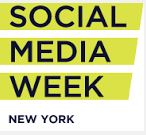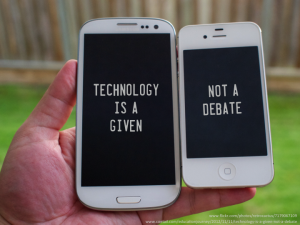There is another great NY Enterprise Tech meet up tonight, on recruiting tech talent for  startups. Clearly I am late in blogging about February’s, which was about how to raise seed capital – so I am taking care of that now, with this post.
startups. Clearly I am late in blogging about February’s, which was about how to raise seed capital – so I am taking care of that now, with this post.
The topic is paramount for anyone who has a great idea, but needs potentially game changing funding. February’s NYETM featured a panel that offered some very helpful tips. Work-bench Associate Vipin Chamakkla guided the conversation, to help attendees get answers to questions about seed investor “appetites”, pitching preferences, etc.
The panel included Karin Klein, Partner at Bloomberg Beta, Eliot Durbin, General Partner at Boldstart Ventures, Mike Brown Jr., General Partner at Bowery Capital and Brad Svrluga, General Partner at Primary Venture Partners.
As you will see, each has their own approach, yet a few common threads emerged. It helps to have connections. Be smart when approaching investors: do your homework and make sure that there is a match. Every venture and market space is different; there’s no single formula for evaluating startups.
The demo portion is an important part of every NYETM, and I should mention that were some very cool demos before the panel took the stage – see the end of this post for further details.
Please feel free to chime in via comments, or e-mail me if you think I’ve missed anything.
Describe your focus, portfolio examples and average funding check
Eliot Durbin said that Boldstart invests in enterprise tech, smart data, big data, and the Googlization of IT. Their checks are in the $750K range. A portfolio example is Replicated, which was on the evening’s demo roster (see the end of this post).
Bloomberg Beta invests in companies that make work better, in the $200K-1M range, said Karin Klein. The technologies range from security to HR, and include analytics, bots, and machine intelligence. They were in early on Pathgather, an online learning solution.
Mike Brown of Bowery Capital tracks ventures that relate to Internet natives and their influence on IT spend. They like to lead or co-lead investment rounds, in the $500K range. ActionIQ, a marketing tech play, is in their portfolio.
Brad Svrluga said PVP invests $250-700K and likes SaaS, enterprise mobile, and vertical industry solutions, including fintech. They funded Alloy, an API to Know Your Customer (KYC).
When is right time to approach seed investors?
Eliot: “We want to be the first check.” The timing can vary, for example in Replicated’s case it worked out well, as they saw and solved a huge pain point.
Karin said that earlier is better, in general – but this depends on who you are. A founder with a track record can afford to wait longer.
The prototype stage is a good milestone. But this can vary, e.g. Pluralsight bootstrapped for nine years before seeking funding.
If a venture is pre-product, what else does it need to have?
Mike said there are some non-obvious factors. In enterprise tech, it is good to see that the founder appreciates implications of the long sales cycles involved. They should have an ideal customer profile in mind and factor in sales velocity equations. Could the founder sell him the pen sitting on his desk?
Brad likes founders who are solving a problem they’ve lived through, and to see that they have a real understanding and passion; as opposed to business school projects.
What KPIs do you evaluate when vetting startups?
Eliot: “It’s got to have magic.”
Karin said that it is a highly contextual, and hard to generalize. E.g., with HR tech you want to see easy end user adoption – Pluralisght hit upon a pricing model that was very attractive.
What is the best way to pitch seed investors?
Karin loves to see demos; use a pitch deck if it helps tell the story.
Brad likes a good Genesis story. He really cares how they’re pitched, because it’s the “single best data point for how founders pitch customers and employee candidates.” A pet peeve is unrealistic market size numbers. Coming in through another founder in their portfolio is the best way. Sending a cold email suggests that you are not being strategic, however, sometimes you don’t have any other choice. In those circumstances, you can find cold email templates which you can then adapt to your needs.
Eliot: When pitching, walk in with a good sense of what they are looking for and what you want.
Mike likes those who are very good at selling software.
Audience Questions: One bootstrapped to $40K monthly revenue, and was wondering if they should go to seed or A round funding.
One of the panel members said “Skip us if you can – you will retain more equity.”
Why take your money?
Elliot said that Boldstart can help get customers.
Karin offered that Bloomberg Beta can help fill in gaps in the venture’s team.
Brad talked about PVP’s expert network, which saves search fees for portfolio companies.
What percentage are repeat vs. first-time entrepreneurs?
“Both are nice.”
“This depends on the bias of portfolio.”
“For the very first time, there’s not as good a chance”
Brad said that about half are first timers.
Before the panel, two vendors showed their wares. Replicated is a container-centric platform that enables software companies to manage and distribute an enterprise-grade, installable version of their product behind the firewall and into their customers’ private data centers or private clouds. HYPR decentralizes the storage of biometric data to enable secure password-less authentication across mobile, desktop and IoT systems.









